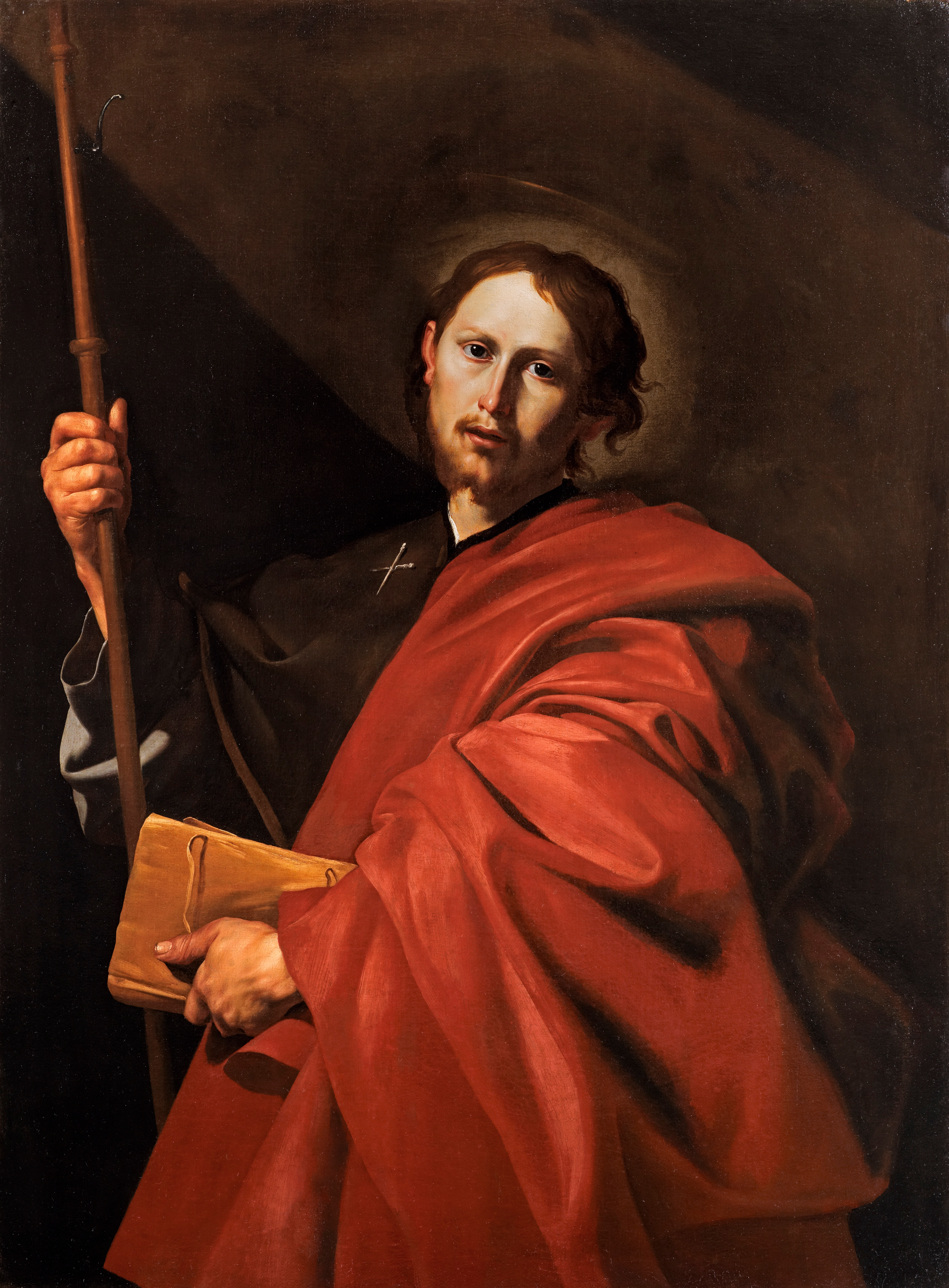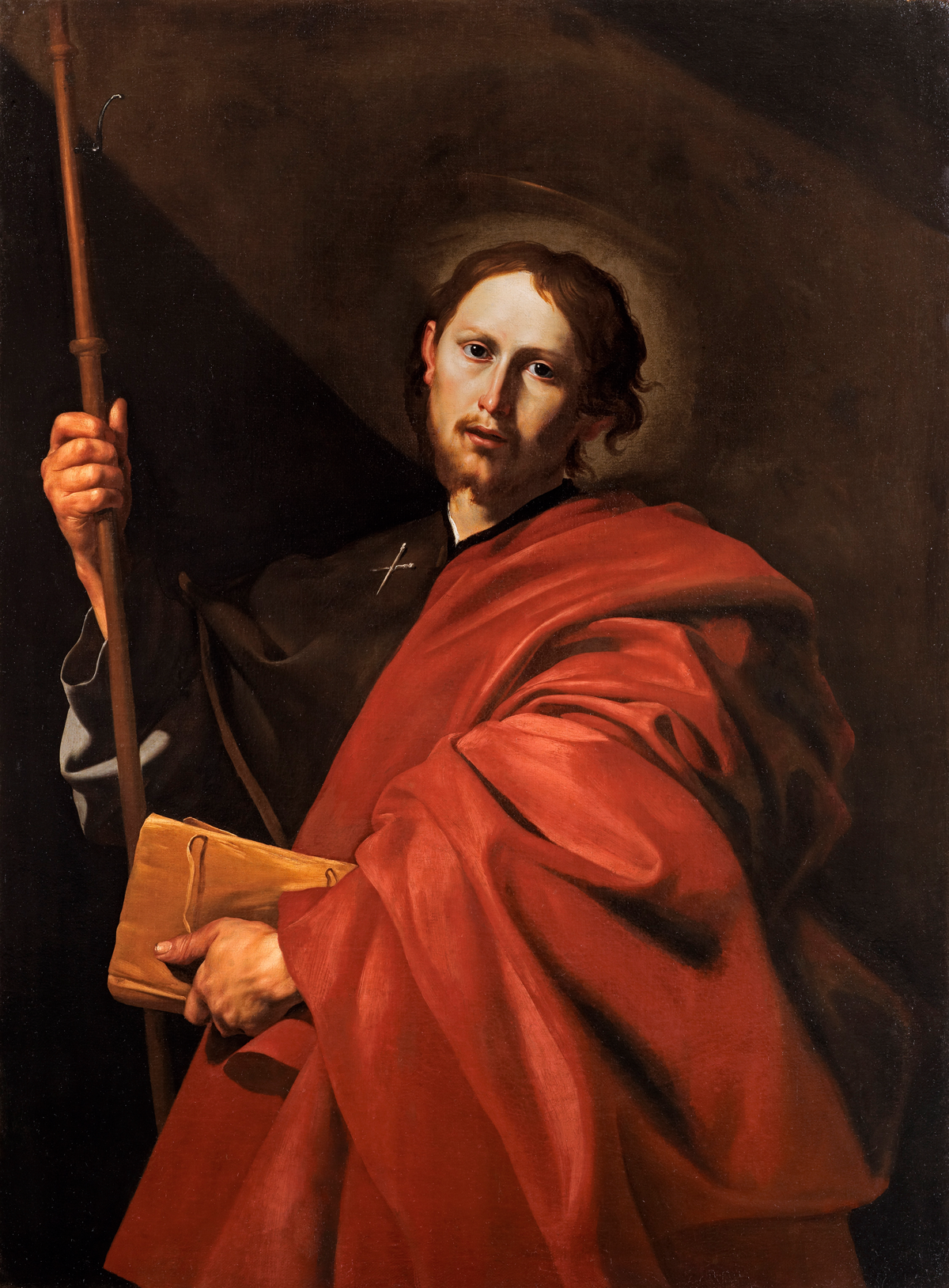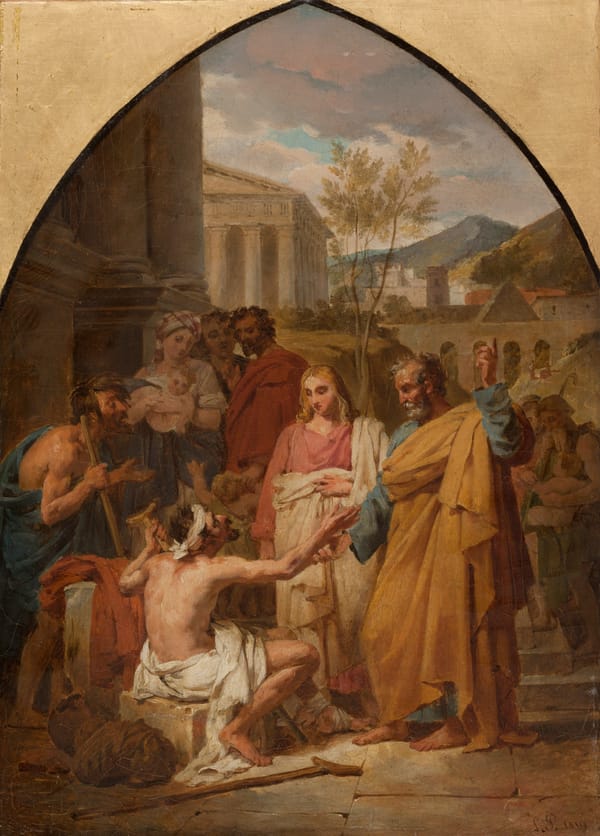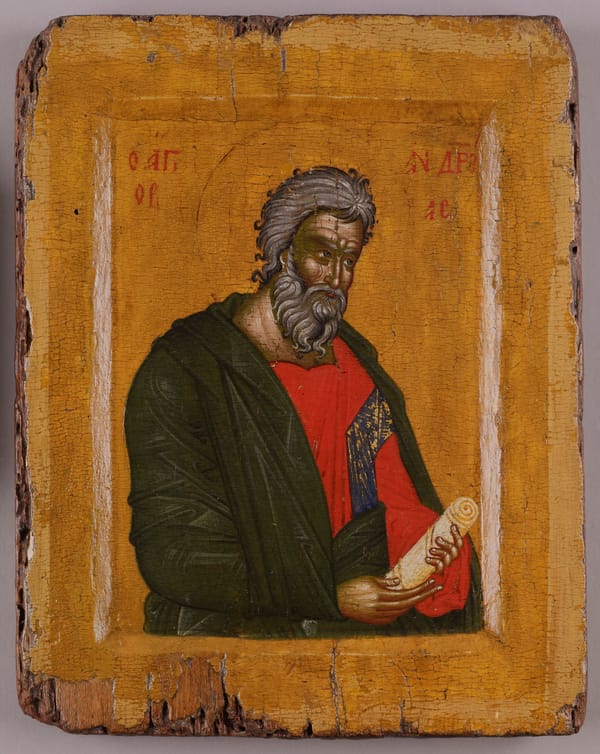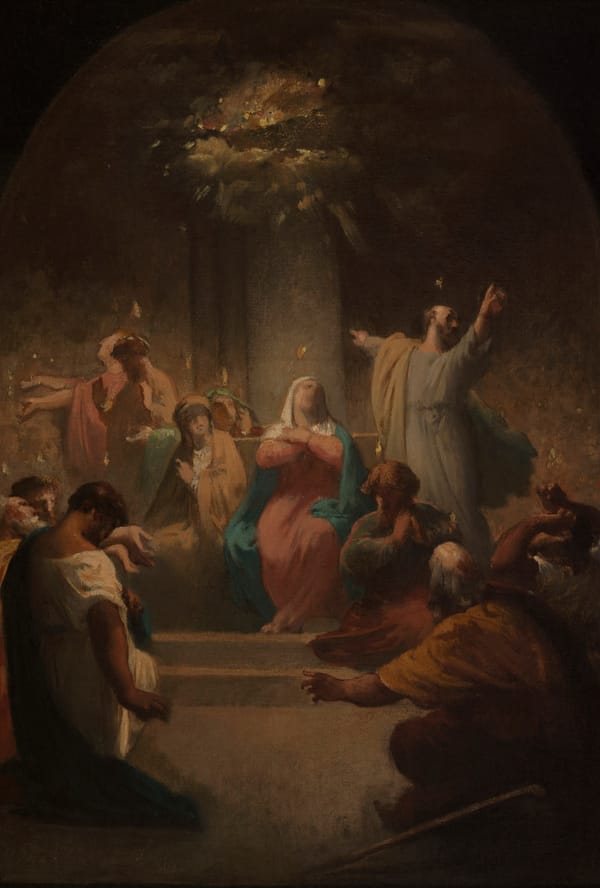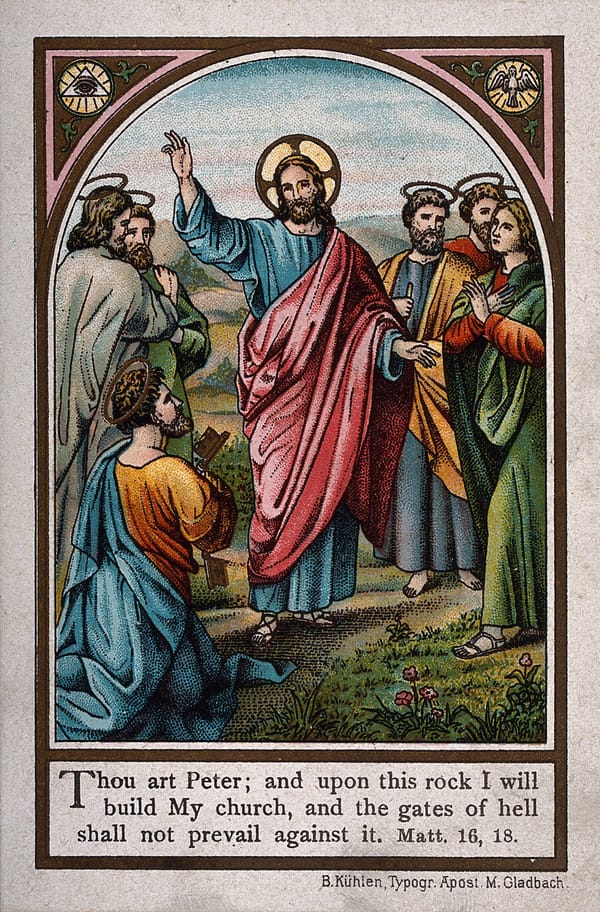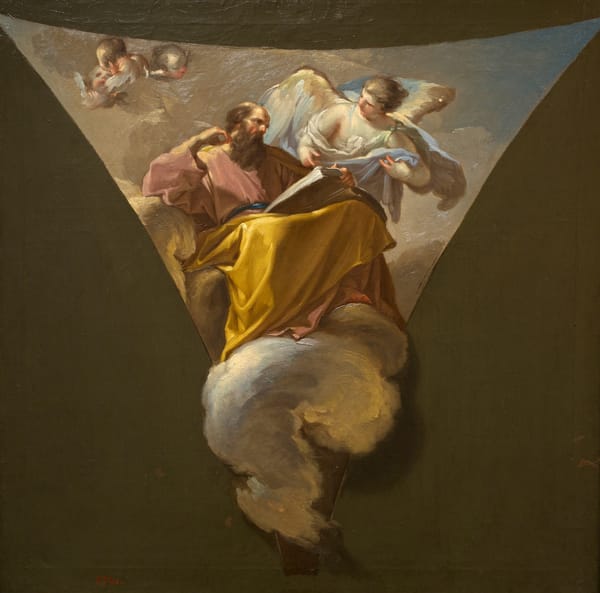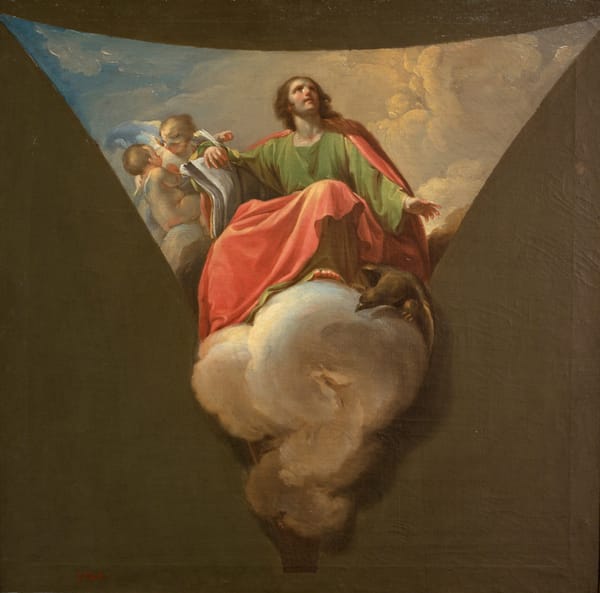About the Image:
Saint James the Greater is an early work by the Spanish painter Jusepe de Ribera, who worked in Italy. He painted this picture in around 1615/16, towards the end of his stay in Rome. Ribera, who is among the first and most important Caravaggisti, further developed Caravaggio’s revolutionary new art with his own distinctive approach.
Here we come face to face with a monumental half-figure with sculptural presence. The apostle stands in front of a dark wall and is illuminated by a cone of light entering from the top left of the picture. The insignia that is pinned to his robe gleams in the light and serves as another reference to Saint James’s pilgrimage, apart from his pilgrim’s staff. His bright red cloak has a voluminous quality, its folds forming into a range of hills and valleys.
The gentleness of the saint’s inclined head creates a subtle contrast with the power expressed in his physique. This ambivalence between outward appearance and inner epiphany, between presence and rapture identifies the painting as a sophisticated masterpiece in Ribera’s early work. source
About the Artist:
Jusepe de Ribera was a Spanish painter known for his Baroque style. Along with other prominent artists like Diego Velázquez, he is considered one of the greatest European masters of the seventeenth century. Ribera was known for his history paintings, particularly his depictions of martyrdom, as well as portraits, still lifes, and landscapes. He was baptized in 1591 in Játiva, Spain, and moved to Naples in 1616, where he remained for the rest of his life. Ribera established an international reputation and received the Cross of the Order of Christ from Pope Urban VIII in 1626. His health began to decline in 1643, and he experienced financial hardships in his later years. Despite this, he continued to produce fine paintings until his death in 1652.
